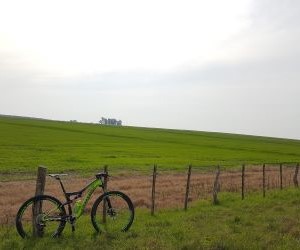Learn how to deal with punctures on long rides with prevention tips, repair techniques, and smart gear choices to keep rolling without stress.
HOW CAN I OVERCOME FEAR OF CYCLING IN TRAFFIC?
Cycling in traffic can be intimidating—even terrifying—for new and experienced riders alike. But it doesn’t have to be. With the right mindset, techniques, and safety skills, you can shift from anxious to confident while riding in urban environments. This guide offers data-backed strategies, mental reframing techniques, and actionable tips to help you overcome traffic-related cycling fear. Whether you're commuting or training, safer, calmer riding starts here.

Understanding the root of traffic fear
Fear of cycling in traffic is entirely valid—and incredibly common. It stems from a mix of psychological and environmental factors, including real risks and perceived threats. Unlike trail riding or bike paths, traffic introduces unpredictable variables: distracted drivers, narrow lanes, loud noise, and unclear bike laws.
What makes traffic so intimidating?
Lack of control: Cars move faster, weigh more, and often dominate the road space.
Negative experiences: A close call or verbal harassment can create lasting anxiety.
Skill uncertainty: Not being sure about signaling, lane positioning, or dealing with intersections increases tension.
Noise and stimulation: Urban traffic can overwhelm the senses, raising heart rate and perceived danger.
Social pressure: Fear of judgment or making mistakes in public adds mental friction.
These fears are rational—but not insurmountable. The goal isn’t to ignore the risks, but to manage them through preparation, practice, and perspective. Just like building endurance or climbing ability, confidence in traffic grows with consistent, structured exposure and the right mindset.
Practical steps to build traffic confidence
Confidence doesn’t come from pretending fear doesn’t exist—it comes from facing it systematically. If you’re nervous about traffic, don’t just “tough it out.” Instead, take small, repeatable steps that rewire how your brain responds to the road.
Step-by-step traffic desensitization
Start in quiet neighborhoods: Ride in low-traffic areas at off-peak times to build basic handling and awareness.
Progress to bike lanes: Use protected lanes or multi-use paths to get used to riding near moving cars with separation.
Choose familiar routes: Repetition reduces anxiety. Knowing the turns and traffic flow reduces cognitive load.
Ride with a buddy: Group riding offers support and models good traffic behavior. Confidence is contagious.
Practice key skills: Learn and rehearse hand signals, shoulder checks, lane merges, and defensive riding techniques in controlled settings.
Beyond the physical skills, mental reframing helps a lot. Instead of thinking, “Traffic is dangerous,” reframe it as, “I’m becoming skilled at managing traffic situations.” Your nervous system adapts to what you expose it to regularly—so keep showing up in small doses, and watch fear transform into familiarity.
Also consider joining a bike safety or urban skills course in your city. Certified instructors can walk you through real-world scenarios in a low-pressure environment. You’ll leave with tools, not just theories.
Advanced safety tactics and mindset shifts
Once you’ve built a foundation, the next level is riding proactively—not reactively. This means riding as though you belong on the road (because you do), while using proven tactics to reduce risk and stress. Paired with mindset work, this makes traffic riding feel predictable and even empowering.
Tactical safety upgrades
Claim your lane: In narrow streets or fast traffic, ride farther from the curb to increase visibility and prevent unsafe passes.
Use front and rear lights—even daytime: Studies show daytime running lights reduce crash risk by over 20%.
Mirror and shoulder checks: Develop the habit of scanning for threats every 10–15 seconds.
Master intersections: Be assertive, not timid. Make eye contact, signal early, and anticipate driver behavior.
Stay alert but calm: Avoid headphones. Listen to engine sounds, tire noise, and brakes—it gives clues about vehicles behind you.
Mindset for urban riders
Fear doesn’t mean weakness—it means awareness. Use that alertness as a strength, not a handicap. Treat each ride as practice, not a performance. Celebrate small wins like a confident merge or a calm stop at a busy light.
Journal your progress: Write down what went well after each ride. Confidence compounds through reflection.
Breathe intentionally: When tense, exhale longer than you inhale. This signals calm to your nervous system mid-ride.
Adopt a pro mindset: Visualize yourself riding with confidence before you roll out. Visualization primes performance.
You don’t need to be fearless—you just need to be focused and prepared. Over time, what once felt terrifying becomes routine. And that’s the real win: turning fear into freedom, one ride at a time.
YOU MAY ALSO BE INTERESTED






